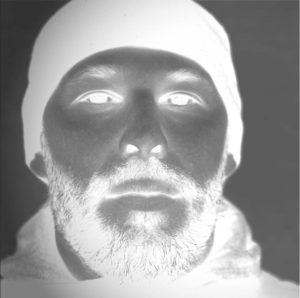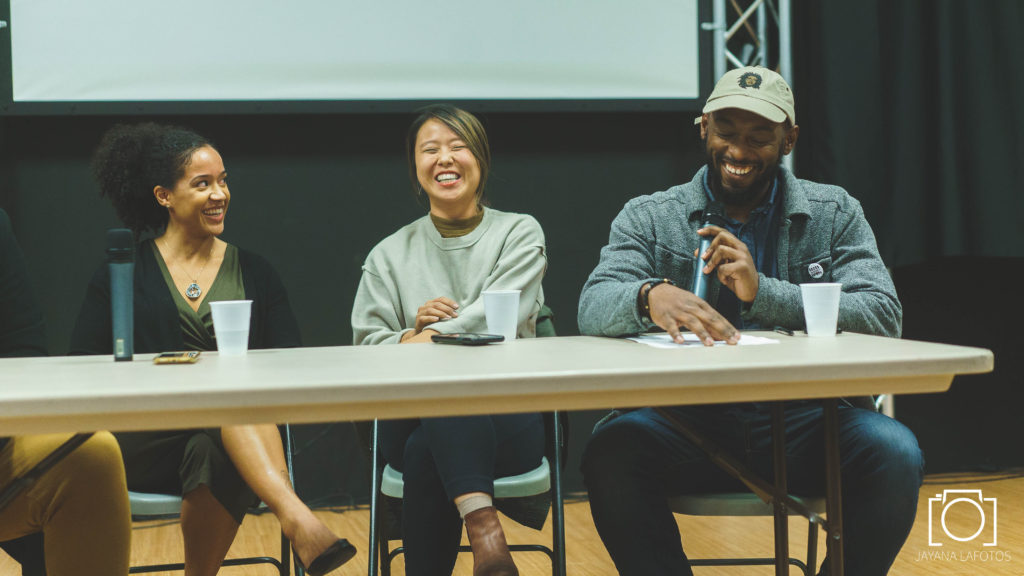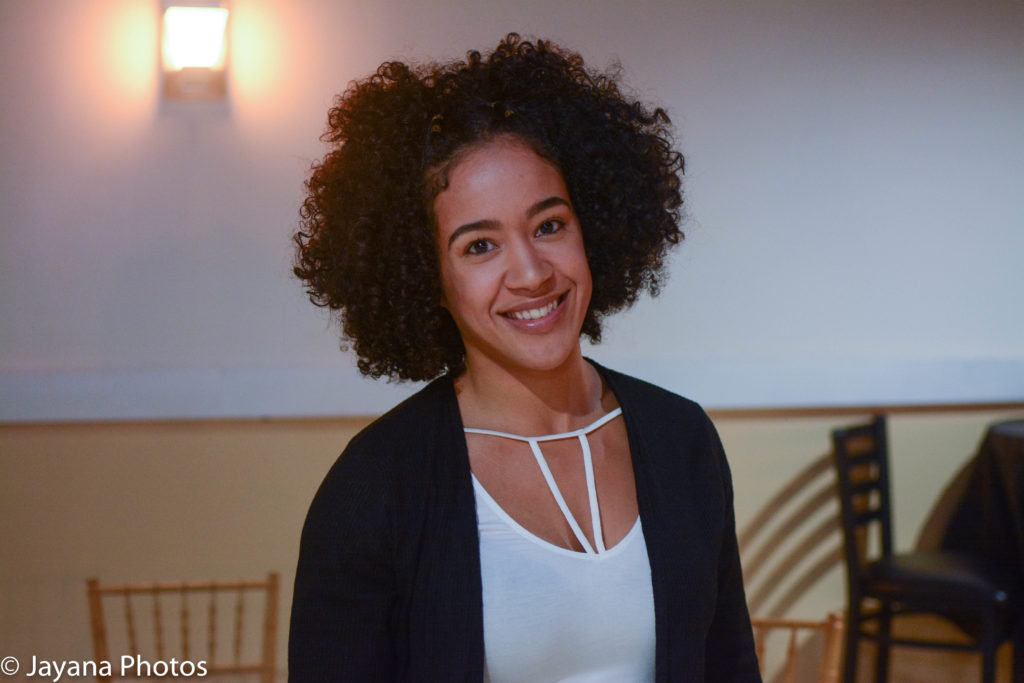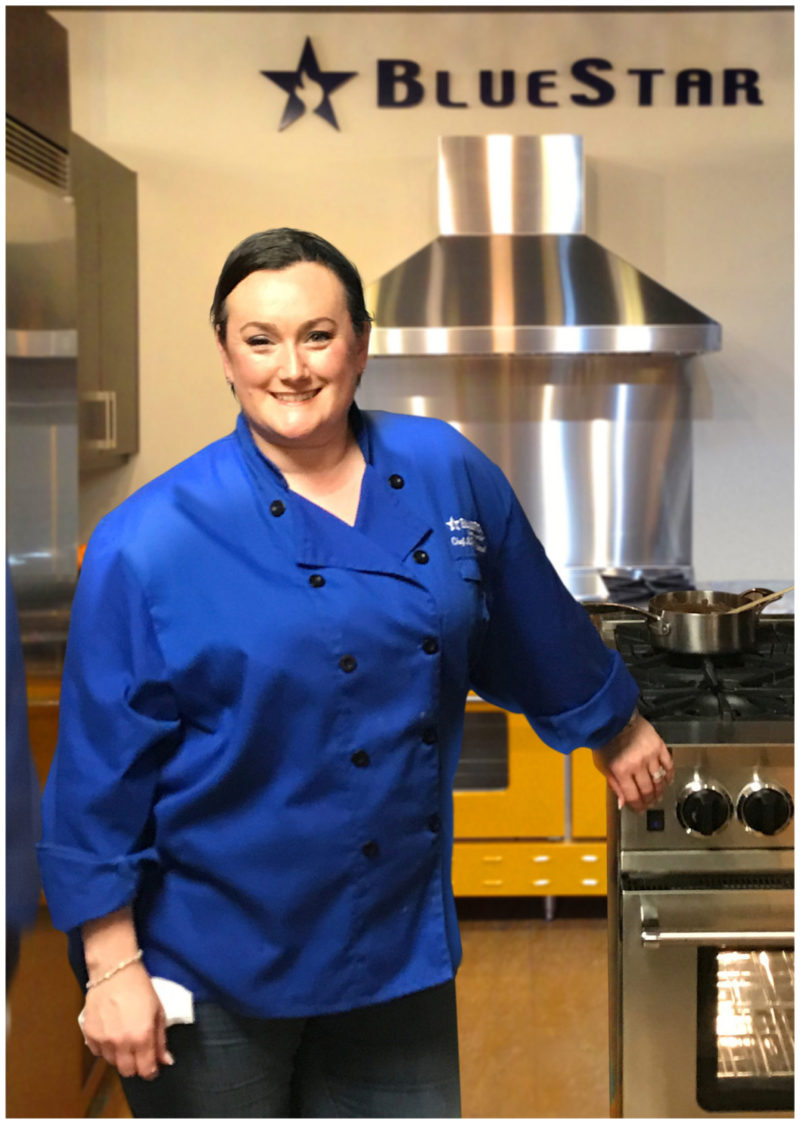
Upstate Alliance for the Creative Economy


Photo by James Schlett.
It is a story that starts almost like a joke: almost two decades ago, a state worker, an electrical engineer and a classical music composer walked into a Tai restaurant. The joke, however, ends there, and what has happened since then has amounted to a tour de force in the North American haiku community.
Haiku – yes, that Japanese art form often taught to middle school students – is thriving in upstate New York, especially the Capital Region. Not only do several of the nation’s best-known haiku poets live in the Capital Region, two of North America’s leading haiku journals have upstate editors at their helm: Rochester’s Michael Ketchek edits Frogpond, and Nassau’s John Stevenson is the managing editor of The Heron’s Nest. A third upstate publication, Upstate Dim Sum, a biannual haiku anthology, is edited by Schenectady’s Yu Chang.
Route 9 Haiku Group
The Capital Region’s influence on modern American haiku has been growing since the three poets met at the Tai Pan restaurant on Route 9 in Halfmoon in February 2000. They included Stevenson, a retired human resources administrator with the New York State Office of Mental Health; Chang, a retired Union College electrical engineering professor; and Schuylerville’s Hilary Tann, the current chair of Union’s Performing Arts Department. Since then, this trio, plus Tom Clausen of Ithaca, have been meeting at Tai Pan monthly, occupying the same back corner table and dining on dim sum often from noon to 6 p.m. They call themselves the Route 9 Haiku Group, and at these meetings they provide feedback on their haiku and select poems for Upstate Dim Sum.
on the horizon
just enough cloud
to hold some sunset
Tom Clausen, Ithaca
American Haiku
Modern American haiku is very different from the three-lined poetry with 17 syllables that students are taught in middle school. It is an art that draws its power and beauty from not only nature but also from a faithfulness to simplicity and brevity. It is a nod to life’s impermanence and an attempt to capture its moments before they vanish like morning dew. Haiku leaves much unsaid and more to the imagination. The traditional 5-7-5 syllable structure is largely viewed as a maximum – rather than mandated – length per line. Haiku that exhaust all 17 syllables can be superfluous, whereas those with half as many are vastly more expressive.
silence
for some
includes birdsong
Hillary Tann, Schuylerville
One core element of haiku is the kigo, or “seasonal word,” such as Tann’s “birdsong,” a harbinger of spring. Another core element is the kire-ji, or “cutting word,” which introduces a twist to the poem, the way the “birdsong” contradicts the “silence” in Tann’s poem. Haiku can be less centered on nature and lack a kigo, but those that primarily provide social commentary are categorized as senryu.
children’s ICU—
a tissue box beside
the pay phone
John Stevenson, Nassau
Capital Region Haiku Headliners
If there is such a thing as a superstar haiku poet in the United States, Stevenson would be one. He is a former regional coordinator, treasurer, vice president and president of the Haiku Society of America (HSA) and editor of its quarterly journal, Frogpond. Since 2008, he has served as the editor of The Heron’s Nest, and since 2007 he has been a judge in the United Nations International School’s annual haiku contest. He is an Honorary Curator of the American Haiku Archives at the California State Library. He has won many first-place HSA contests and was voted “Poet of the Year” three times by Heron’s Nest readers prior to being named its editor.
autumn wind
the leaves are going
where I’m going
John Stevenson, Nassau
Chang, a Chinese native who grew up in Taiwan, started writing haiku in the mid-1990s and quickly established himself as a prominent haiku poet. He won the grand prize for the Shiki Internet Haiku Contest in 1996 and 1997, the Museum Of Haiku Literature Award in 1998 and the Harold G. Henderson Haiku Award in 1999. More recently, he won the Heron’s Nest’s grand prize for Poet of the Year in 2009 and Haiku of the Year in 2016. Schenectady’s Central Park, a short walk from his house, is a perennial source of inspiration for this humble, soft-spoken poet.
gathering light
at the tip of an acorn
yesterday’s rain
Yu Chang, Schenectady
The Welsh-born Tann played an integral role in bringing Haiku North America – the nation’s largest haiku poet gathering that occurs biennially – to Union in 2015. She received the Haiku Society of America Museum of Haiku Literature Award in 2006. Along with the Route 9 Haiku Group poets and Paul Macneil, a Heron’s Nest editor from Ocala, Florida, Tann in 2017 and 2003 won the grand prize for the HAS’s Bernard Lionel Einbod Renku Collection Awards. Renku is a linked-verse poem of haiku-related literature written by multiple poets and alternating between three- and two- line stanzas.
Other Local Haiku Poets
Other established and emerging Capital Region haiku poets include, but are not limited to, Stuart Bartow, a SUNY Adirondack English professor from Salem who last year published his first haiku book; Wonja Brucker, a Korean-American retired librarian from Princetown; and Saratoga Springs’ Barbara Ungar, a College of St. Rose English professor who has been writing haiku for a half century. At Stanford University in the 1970s Ungar was a pupil of the renowned haiku critic Makoto Ueda, and her senior honors essay on “Haiku in English” was reprinted in Simply Haiku in 2009.
chickadees nesting
in the mailbox news
from the sky
Stuart Bartow, Salem
snow in the air
on the stone walk a mouse
laid out by the cat
Barbara Ungar, Saratoga Springs
sunlit icicle
he wants to keep it
in his toy box
Wonja Brucker, Princetown
alone
hugging
warm laundry
Davis Giacalone, Schenectady
cool August evening
grass clippings all over
our backs
James Schlett, Colonie
The HAS does have a Northeast Metro region, which includes New York State. However, outside of the closed circle monthly Route 9 Haiku Group meetings at Tai Pan, there are no regular haiku poet gatherings in the Capital Region. Below are journals with Northeast-based editors and annual gatherings in New England.
New York/New England Haiku Journals
Annual Haiku Poet Gatherings
About the Author
In addition to being the Center for Economic Growth’s director of research and communications, James Schlett is an award-winning poet, author and journalist. He is the author of A Not Too Greatly Changed Eden: The Story of the Philosophers’ Camp in the Adirondacks (Ithaca and London: Cornell University Press, 2015), winner of the Adirondack Center for Writing’s Adirondack Literary Award for Best Book of Non-Fiction in 2015. His haiku has been published in Frogpond, The Heron’s Nest, Acorn, Modern Haiku, Bottle Rockets, Wild Plum, and Akitsu-Quarterly Journal.


ACE Digital Manager Ashleigh Kinsey spoke to Rachelle “Chelle” Pean about how she got started in her Holistic Health career.
Rachelle “Chelle” Pean grew up in Schenectady. Her father is from Haiti, and her mother from Maine. Chelle attended SUNY Purchase and got her degree in Psychology before completing her Masters in Social Work at CUNY Hunter in Harlem. She worked in hospitals in the Bronx before returning to the Capital Region to practice. After working at a hospital in Troy, Chelle began to build her business in January of 2018, and started running her practice full-time in August 2018. When asked why she decided to go into business for herself, she said, “I wanted to integrate mind-body healing techniques into talk therapy, but with the demands of working in a bigger system I didn’t have the time or energy to give my clients that experience as much as I wanted to. The demands of working in a large system were also crushing my creativity and I saw it only getting worse if I stayed.” Chelle’s business is all about holistic health. Integrating mind, body, and spiritual healing through talk therapy, yoga, and other mindful practices. Many of her clients have past childhood trauma and Chelle helps them stay present and thrive when past traumas resurface.
Although this was a career Chelle wanted and studied for, it still had some unexpected results that she never imagined. After speaking at an Intergenerational Trauma and Healing Workshop at SUNY New Paltz, Chelle says, “I never really enjoyed talking in groups, but found that if it is something I love, and something I care about, speaking in public is something I’m good at.”
Chelle’s days now consist of teaching yoga classes around the Capital Region, seeing patients, and speaking at workshops about holistic health. When asked what advice she would give to others pursuing a similar path, Chelle says, “Just start. People feel like they have to know everything to share their perspective, but if you share what you care about with your unique perspective, that’s enough [to get started]. That’s valuable. Don’t be afraid to put yourself out there.”
One of her favorite things about living and working in the Capital Region is that it’s easy to collaborate with others. “There’s so much going on in NYC, it’s tough to connect sometimes. Having a smaller network, you know who’s putting on what event, and [connections] feel more personal. Also, you can tell pretty quickly when you are making a difference.”
Although there are many advantages to living in the Capital Region, there is one thing that Chelle thinks could use some improvement. “Inclusion is always an issue. POC’s create their own enclaves, but this area would benefit if there were easy-to-get resources.” Many times
POC’s end up making spaces for themselves instead of trying to fit a particular mold. Chelle recalled an experience at a job where she had a “seat at the table” but still felt disconnected. “It was like the policies were not created for me, and although I’ve had a ‘seat at the table’, it was not effective.”
Chelle says that if there was a true opportunity to facilitate changes in policies within organizations to promote inclusion, she would love to be a part, but for now, it would be a better use of her energy for good if she focused on “building her own table” with policies and procedures that were more inclusive in nature.
Chelle teaches a donation-based yoga class every Thursday at the African American Cultural Center, 135 South Pearl St, Albany NY. She also teaches Sundays at 12pm at Yoga Bliss on the Boulevard, 140 Erie Blvd, Schenectady, NY. Chelle also does workshops. For more information visit chellemariewellness.com.

The road to success isn’t always direct. Michelle Hines Abram Thibeault, the President of M.H.A. Innovations and Chef MHAT, reached lofty heights in the ballet world and trained at the New York Conservatory of Dance before injuries muddied her career plans. Fond memories of cooking with her grandmother led her to apply to the prestigious French Culinary Institute (now known as the International Culinary Center), developing a new outlet for her creativity.
Following a stint as Executive Chef at Mood Food that included a spot on New York Magazine’s Top 10 list, Michelle worked in event planning before branching out on her own with Innovative Events, a luxury event and catering business in Manhattan and Florida. The Latham native returned to the Capital District and became a Founding Director of the Albany Chefs’ Food & Wine Festival: Wine & Dine for the Arts in 2009. Since 2010, Chef MHAT has provided public relations and brand management for the hospitality industry through M.H.A. Innovations and she has returned to the kitchen as a private chef. She took a few minutes out of her busy schedule to speak with us ahead of catering the November 7th ACE Mixer at the Bull Moose Club in Albany.
Does your dance background benefit you in your hospitality/cooking career?
I think yes – 1000%. In the kitchen it doesn’t bother me to work until 4:00 AM to get something right. It’s the foundation of discipline – everything matters, you can’t cut any corners. It has to be that way; the French Culinary Institute was very exacting and after the Russian Conservatory experience it was a natural fit. Mentally it prepares you for success not only in a creative field but really any endeavor.
How did the change from Executive Chef to Brand Management come about?
When working as a chef in NY it was really intense – I was working 100 hour weeks and loving what I did. I was approached about planning events and I had an interest in ‘front of the house’ (dining area) vs. ‘back of the house’ (kitchen). I wanted to learn and thought later on it would be good to know both sides. I left my position as chef and started planning events but eventually realized I wanted to do that on my own. I was open for about 9 months prior to 9/11 and after that it was very difficult as events in the city were cancelled. I relocated to Florida and did well there but wanted to come home. It was just a curiosity that led to the change but I found I could do both aspects well. Everything I’ve done has been a natural progression.
What is the state of the Capital District Food Scene?
I love what people are doing here – years ago it wasn’t like this. It drives me crazy when certain organizations skip our area when handing out awards. There’s NYC, Boston, Montreal within a short drive but we have chefs here who are doing great things and have been for years. I think of Chef AJ Richards up at [forged] in Hudson Falls and what he is doing there is spectacular. He got our first Rising Star perfect score; it blew my mind with the quality and innovation – this jewel is sitting right here. What Hamlet & Ghost in Saratoga Springs is doing with craft cocktails is crazy; you just have to look.
I see a lot of chefs here who know who their purveyors are and where their food is coming from – know your farmer, know your suppliers. There’s so much great stuff going on here; the Food & Wine Festival is anyone’s chance to explore the scene with so many chefs and restaurants in one spot.
What someone should know before considering a cooking career?
Culinary schools are becoming much more competitive due to their popularity, but you can reach out and talk to those in the field. All the chefs I work with are so generous with their knowledge and mentor many people; it is part of the DNA of a chef – we feed people. It’s not about ego but it’s about giving and sharing of yourself. Reach out to a chef you’ve heard great things about, they will generously share their knowledge and experiences.
Creative Economy Updates and Other Good Stuff!